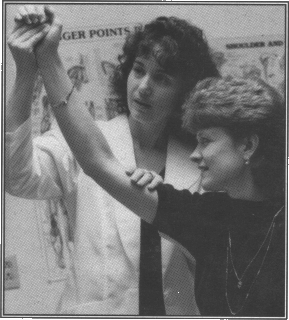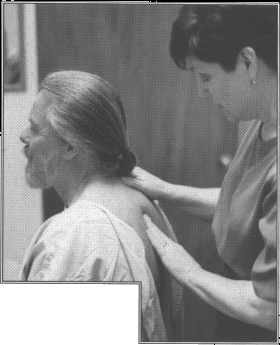
Years of unrelenting pain can negatively condition a person's emotions, perceptions and reflexes. The victim of pain will avoid anything they suspect may suddenly aggravate that pain: lifting, reaching, dancing or getting overtired in any way. The victim of chronic pain can become defensive, resentful and perpetually short tempered.
Sudden relief from the pain of years can produce a strong and positive personality change. It is a gift to the family as well as the patient. Pain free is a happy way to live your life.
 A New Approach to Pain
A New Approach to PainIt should surprise no one that correcting structural problems in the spine or joints will not always make the pain go away. Inflammation or fibrosis in a painful muscle will reduce the circulation of blood & nutrients and hinder or prevent the normal function and healing of that muscle tissue. The result can be a significant gradual increase in pain and dysfunction.
Nothing changes until the muscle is treated.
For years, sports medicine has used localized electrical current to block pain in professional athletes. What medicine has now discovered is that smaller amounts of electrical current can be used to stimulate healing on a more basic cellular level.
The body can utilize very small amounts of current (millionths of an amp) to stoke the healing fires within each individual cell: increase cell wall permeability, stimulate critical protein production and promote ATP (natural biochemical energy) availability.
Beginning from this cellular level, applications of microcurrent can trigger a dynamic restorative sequence and reverse the damage of years: healing each cell and fiber; banishing fibrosis and restoring circulation to complete the task. What is truly remarkable is that this process works quickly. There is minimal discomfort and usually a rapid result.